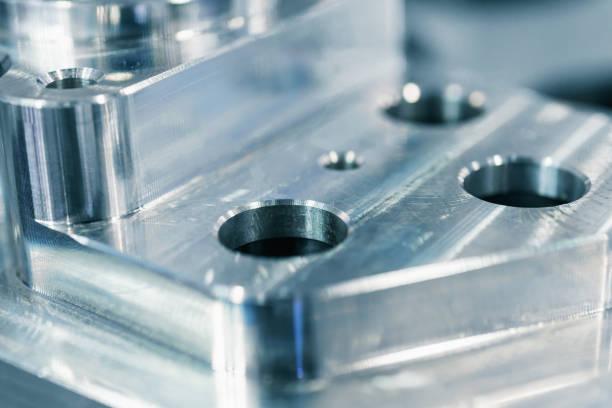Computer Numerical Control or CNC machines run on a computer program, which can either be used for prototyping or full item production. The most commonly machined material is aluminum since it exhibits excellent machinability and is also the preferred material in most manufacturing industries. CNC-machined aluminum parts are widely used due to the metal’s amazing thermal and mechanical properties. CNC aluminum has grown immensely in the production of automotive parts.
CNC Aluminum Machining
Aluminum is a lightweight, malleable, soft, and durable material that lacks magnetic properties and is non-flammable. The metal melts at 640 degrees and is a good conductor of electricity. Hence it is widely used in the automotive, aerospace, ATV, and medical industries.
Aluminum Grade
The aluminum grade that you intend to use depends upon the machining projects. This allows you to rank each grade according to its characteristics so that you can choose the aluminum with specific properties and shapes per your needs.
CNC Aluminum Prototype
CNC aluminum machined prototypes are commonly produced according to various alloys, the most used alloy being 6061-T6, which caters to the electronics, aerospace, transportation, and military industries. CNC aluminum prototype machining can operate with tight tolerances to control even 0.01MM. The CNC machine can also manufacture unique, quality aluminum prototypes, as CNC is just a great choice with its high precision and milling aluminum.
CNC Machined Aluminum Components and Parts
The CNC machined aluminum technology has produced CNC parts and components that are used in a wide range of services like grinding, milling, and turning. Good CNC-machined aluminum parts are growing in popularity in the engineering sector. These machined parts include front panels, EM-housings, spline shafts, dowel pins, lighting fixtures, and medical devices.
How to Avoid Deformities in CNC Aluminum Machining
- Symmetrical machining: It is necessary to avoid extreme concentrations of heat to create a dissipation of heat in order to reduce the rate of thermal deformation.
- Stratified multiple machining: If the aluminum alloy plate has several cavities, one of the cavity walls can be easily twisted due to force distribution. All cavities in the same period should be processed to avoid this.
- Appropriate cutting parameter: Getting a proper cutting parameter is significant to maintain efficiency and reduce the amount of cutting. This problem can be solved by using CNC milling to increase the speed of the machine and reduce the cutting force.
- Drilling and Milling: The cutting is sufficient when the milling cutter is applied to the cavity and parts, which leads to cutting heat, deformation, and expansion. Pre-drilling is the best way to avoid this problem. This can be done using a bigger tool than the milling cutter and then putting the milling cutter to mill.
What Is 5-Axis CNC Machining?
In a 5-axis machining, the CNC moves while cutting in five angles of the axes simultaneously. This process is fast and reliable for designing complex parts as the work is approached in different directions. This type of machining has been widely used as it reduces the lead time and has better efficiency in some instances where multiple set-up’s can be replaced by a single set-up.

